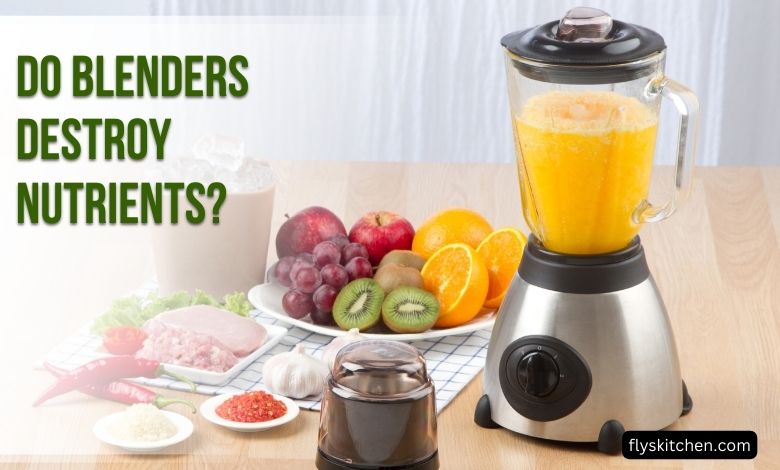Blending fruits and vegetables into nutritious smoothies and juices has become extremely popular in recent years. However, some people wonder if the high-speed blending process destroys the nutrients in produce. This article will examine whether blenders degrade vitamins, minerals, and other healthful compounds in fruits and veggies.
Contents
How do Blenders Work?
Blenders operate by using sharp blades to chop and pulverize ingredients at very high speeds. Powerful motors spin the blades at RPMs ranging from 10,000 to 30,000 or more. This high-velocity blending breaks down the cell walls and fiber in fruits and vegetables, releasing their nutrients and allowing you to drink them.
So while blending does break down produce on a physical level, that doesn’t necessarily mean their nutrients are being destroyed. The nutrients are simply being liberated from the plant cells.
Effects on Different Nutrients
Not all nutrients are affected equally by blending. Here’s a look at how well some common nutrients survive the blending process:
Vitamin C
Vitamin C is very sensitive to heat, oxygen, and time. Exposure to these can cause vitamin C levels to decline.
Fortunately, blending itself does not expose produce to much heat or oxygen. Research shows vitamin C retention at around 90-100% in blended beverages made immediately before drinking.
However, leaving blended drinks to sit for hours before drinking allows more vitamin C destruction to occur. So for max vitamin C, it’s best to drink smoothies and juices right after making them.
Vitamin A
Like vitamin C, vitamin A is sensitive to destructive elements like heat and oxygen. Also like vitamin C, vitamin A retains integrity well during blending.
One study found a blended carrot juice retained 100% of its vitamin A content when consumed immediately after blending.
Vitamin B Vitamins
The family of B vitamins includes thiamine, riboflavin, niacin, pantothenic acid, pyridoxine, and more. Research shows these all retain extremely well when produce is blended.
For example, one study found riboflavin retention to be 94% in blended carrot juice. Another found thiamine retention at 100% in blended apple juice.
Vitamin E
Vitamin E is a fat-soluble nutrient found in plant oils. It’s sensitive to oxygen exposure. Fortunately, studies show blending helps maintain vitamin E activity.
Vitamin K
A fat-soluble vitamin found in leafy greens, vitamin K retention has been shown to be excellent at 100% in blended vegetables like kale.
Fiber
Blending definitely changes the structure of fiber, breaking it down into smaller pieces. However, it does not destroy or eliminate the fiber content itself.
Blended beverages likely have somewhat different effects on digestion compared to whole produce. But they still provide fiber’s important benefits like supporting gut health.
Minerals
Minerals like calcium, magnesium, and potassium are water-soluble and not vulnerable to blending. Studies demonstrate minerals are retained at or very close to 100% of their original levels after produce is blended.
Phytochemicals
Phytochemicals like carotenoids and polyphenols are plant compounds with disease-fighting antioxidant properties. Research finds minimal losses of these nutrients when blending, especially when consumed right after blending.
One study found a blended drink contained 87% of the original carotenoid levels and 100% of the polyphenols.

